Aidan Lawrence Onn - Cabaret Mechanical Movement: Understanding Movement and Making Automata
Here you can read online Aidan Lawrence Onn - Cabaret Mechanical Movement: Understanding Movement and Making Automata full text of the book (entire story) in english for free. Download pdf and epub, get meaning, cover and reviews about this ebook. year: 2013, publisher: Cabaret Mechanical Theatre, genre: Home and family. Description of the work, (preface) as well as reviews are available. Best literature library LitArk.com created for fans of good reading and offers a wide selection of genres:
Romance novel
Science fiction
Adventure
Detective
Science
History
Home and family
Prose
Art
Politics
Computer
Non-fiction
Religion
Business
Children
Humor
Choose a favorite category and find really read worthwhile books. Enjoy immersion in the world of imagination, feel the emotions of the characters or learn something new for yourself, make an fascinating discovery.

- Book:Cabaret Mechanical Movement: Understanding Movement and Making Automata
- Author:
- Publisher:Cabaret Mechanical Theatre
- Genre:
- Year:2013
- Rating:3 / 5
- Favourites:Add to favourites
- Your mark:
Cabaret Mechanical Movement: Understanding Movement and Making Automata: summary, description and annotation
We offer to read an annotation, description, summary or preface (depends on what the author of the book "Cabaret Mechanical Movement: Understanding Movement and Making Automata" wrote himself). If you haven't found the necessary information about the book — write in the comments, we will try to find it.
Cabaret Mechanical Movement takes the would be maker from light mechanical theory through the basic mechanisms to tips on construction of simple moving toys, sculpture or automata. Examples come from the world famous collection of Cabaret Mechanical Theatre. Includes over 200 B&W Illustrations but no detailed plans - you need to use your own imagination! This is a slightly updated digital edition of the paper book which has sold over 12,000 copies since being published in 1998.
Chapter titles: Who, What, Why?, Some Principles, Levers, Shafts, Cranks, Cams, Springs, Linkages, Ratchets, Drives & Gearing, Control, The Checklist, Bibliography, The Back Cover, Index.
From the back cover: Making automata is hard. Making other sorts of three dimensional objects can also be hard, but the extra dimension of movement seems to add a disproportionate amount of difficulty.
For most people, especially those untrained in engineering skills, getting to the point where making mechanical devices is easy, can be a long and frustrating task. Then again, there are many people who have a sound understanding of engineering but cant even draw a horse.
These things can be learnt. This book does not teach you how to draw a horse, but it does remove the mystery that surrounds the world of mechanisms and the business of making things move.
Cabaret Mechanical Movement contains a lot of theory but its also packed with practical tips and ideas for making your own automata, moving toys or mechanical sculpture.
This book is published by Cabaret Mechanical Theatre, a museum that pops-up all over the world to delight its visitors with witty examples of the automata makers art.
Aidan Lawrence Onn: author's other books
Who wrote Cabaret Mechanical Movement: Understanding Movement and Making Automata? Find out the surname, the name of the author of the book and a list of all author's works by series.

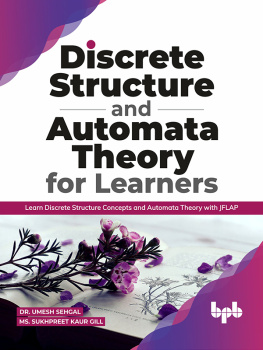
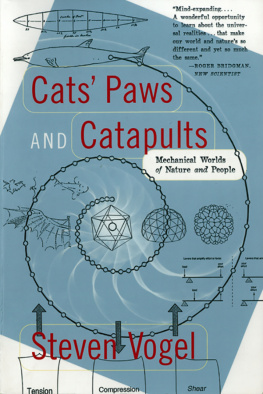
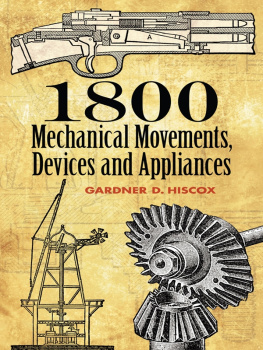
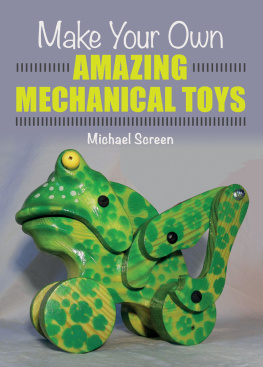
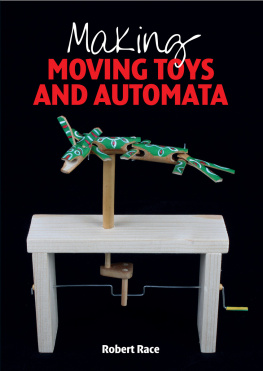
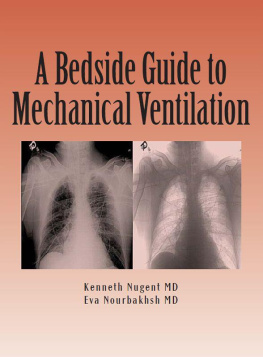
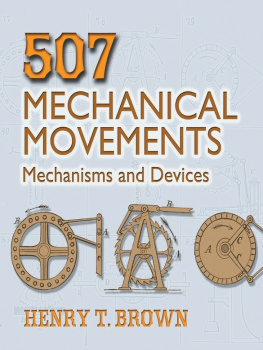




 Pink Policeman by Ron Fuller
Pink Policeman by Ron Fuller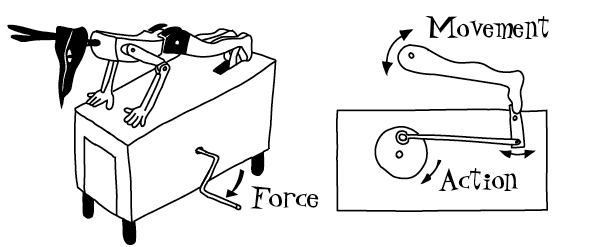
 Bird Watcher by Peter Markey
Bird Watcher by Peter Markey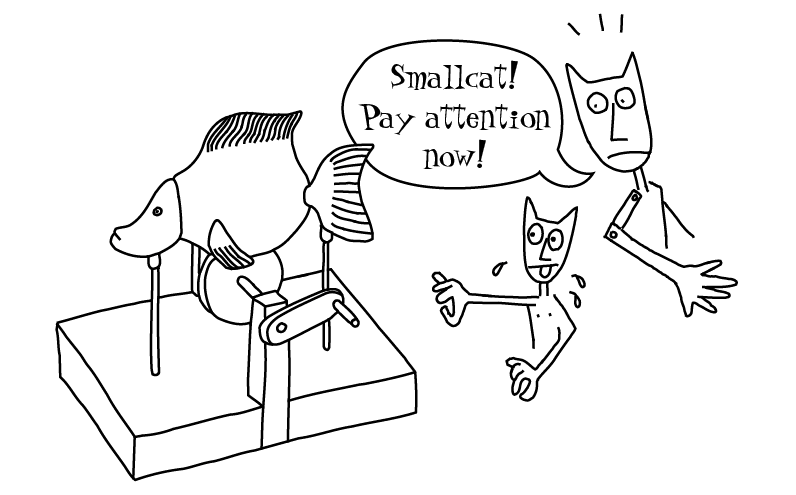
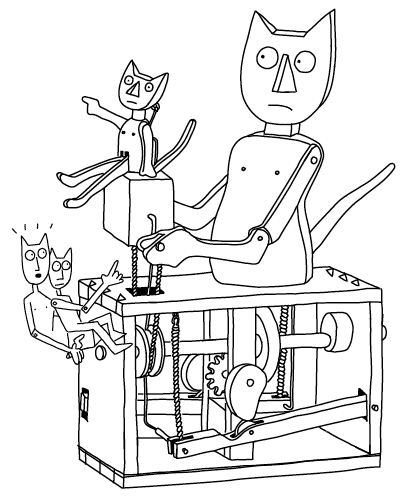 The Barecats by Paul Spooner
The Barecats by Paul Spooner

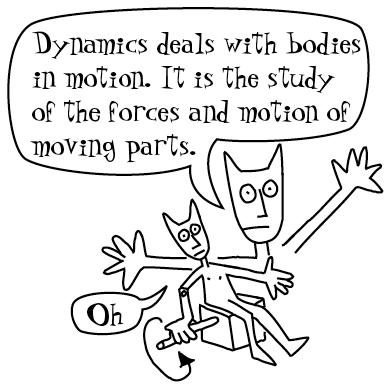
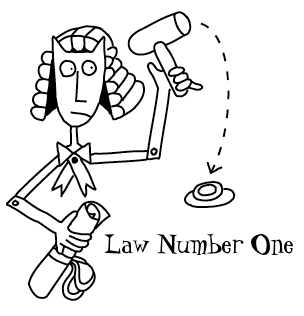 In the year that Galileo died (1642), Isaac Newton was born. He introduced the concepts of force and mass. From this he formulated his Three Laws of Motion.
In the year that Galileo died (1642), Isaac Newton was born. He introduced the concepts of force and mass. From this he formulated his Three Laws of Motion.